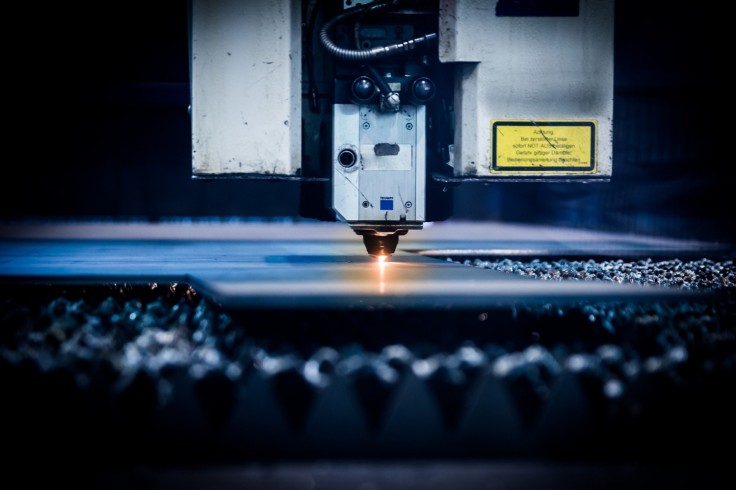
The evolution of technology has continued apace during the 21st century, helping to transform many different elements of daily life.
That is certainly the case where manufacturing processes are concerned, with tech having a positive impact on the way millions of products are made.
Advancements in the digital sector are also a great example of this, particularly for items such as smartphones, laptops, and other electronic products.
Read on as we look at some of the latest innovations that are influencing modern manufacturing processes and improving digital innovations.
Estonian Software Firm Makes Their Mark
A Tallinn-based firm specialising in software for production scheduling in manufacturing was recently listed as a rising star in the sector by a respected advisory company.
According to the Software Advice website, Katana MRP is amongst the Gartner FrontRunners in the Top Manufacturing Software Report 2020.
The news comes just a few months after the firm bagged €4.1 million in funding to expand its business across Europe and continue to grow from its New York office.
Katana is a modern manufacturing and inventory software for scaling businesses, which allows users to automate workflows via a visual interface and smart auto-booking engine.
The system allows businesses to prioritise orders, see the availability of raw materials, and monitor finished goods in real-time.
Katana seamlessly integrates with Shopify, WooCommerce, QuickBooks, Xero, and more, to provide manufacturers with a critical tool to manage their business.
Kristjan Vilosius, Founder and CEO of Katana, said: "This latest recognition from Software Advice demonstrates that Katana is not only the perfect tool for micro and small manufacturers but also for larger players in the SMB manufacturing arena.
Customers are at the centre of everything we do at Katana, so we view this latest recognition as just the beginning. Listening to our customers' needs and feedback is what drives us to develop more features that scaling businesses need to continue to grow."
LG Ready to Bounce Back in Smartphone Sector
LG Electronics was once a leading name in the smartphone industry, but it was gradually eased aside by the likes of Apple and Samsung.
However, the situation is expected to change in 2021, with South Korean electronics giant on track to produce around 35 million units next year.
While Samsung has been making big noises about foldable phones, LG has taken a different approach to its development of dual-screen devices.
In addition to launching a new flagship smartphone, LG has been working on a new device that will feature a rollable display.
Codenamed 'Project B', the new phone is based on a patent filed by LG that has a flexible display that can be rolled into its casing.
This is expected to be the second smartphone to come from LG's Explorer Project following the recent launch of the dual-screen LG Wing with a swivel main display.
The phone will be the same size as a regular smartphone in its most compact, but users will be able to double this when the screen is pulled out from both the left and the right side of the device.
'Project B' was initially tipped to launch during the second half of 2021, but it is now believed this will be brought forward to springtime.
Apple Poised to Leap into the Unknown
Apple will take a step into the unknown during 2021 with the launch of the first MacBooks to run on its new 'homemade' chips.
The latest CPUs for MacBooks are designed by the US firm but produced by Taiwan Semiconductor Manufacturing Co, the world's biggest contract chip maker.
The company has ordered 2.5 million units running on Apple silicon for the early part of 2021, a figure that represents nearly one-fifth of the MacBooks they shipped last year.
The launch of the Apple silicon-powered MacBook Pro and MacBook Air laptops is expected to be quickly followed by the release of a 16-inch MacBook Pro running on the new chip.
Apple has ramped up production of its own silicon products due to the shortages it suffered for its new line of iPhone 12s.
The move will give the firm more control over the production process for its laptops, as well as allowing iPhone apps to run on the devices.
Apple has confirmed that it will continue to support the Intel-based Macs featured on sites like ComputingNews.com, although it will cease using them across the product range within the next two years.
Hyper-automation: the 'Next Big Thing'
The concept of hyper-automation has been gaining traction in recent times and this is expected to accelerate over the coming months.
According to Gartner, hyper-automation is 'an unavoidable market state in which companies should quickly identify and automate all possible business processes.'
Efficiency, efficacy, and business agility are amongst the core principles of this ethos, and the companies who fail to embrace this will be left behind by their rivals.
The innovations leading the drive towards hyper-automation include artificial intelligence (AI), machine learning (ML), decision management, and natural language processing.
The pathway to hyper-automation is Robotic Process Automation (RPA), which applies programming with AI and ML functions to deal with high-volume, repeatable tasks usually performed by people.
As opposed to being bogged down by repetitive tasks, employees become more creative, thus helping to boost productivity.
The analytics generated by hyper-automation can help companies to improve their operations even further, providing a platform for them to flourish in an increasingly competitive world.
Frances Karamouzis, an analyst at Gartner, said: "We call RPA a gateway technology. When people buy RPA and use it, it has created a gateway to look at AI, decision modelling, analytics, and machine learning.
"The ability to consume RPA in bite-sized chunks has meant that it took off like hotcakes. Now people are realising that each one of the tools has its limitations, and the real strength is the ability to use them in combination.









